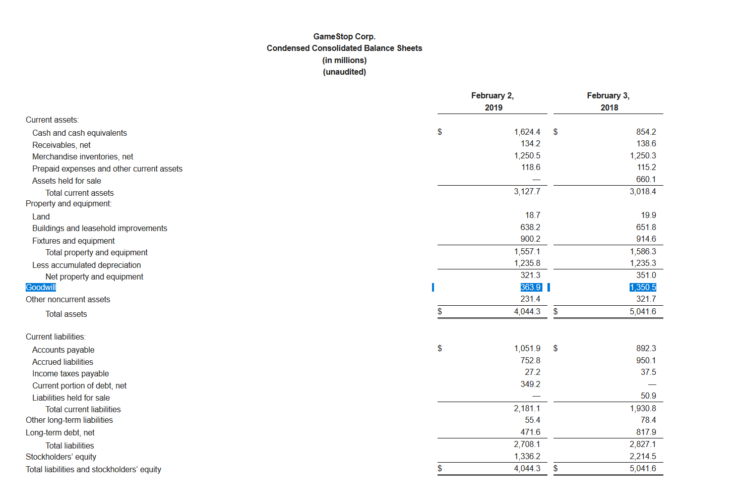
GameStop Inc. (NYSE:GME) Released their Q4 results to investors today with mounting losses and declining sales.
Q4 2018 and FY 2018
GameStop announced their earnings for Q4 today, which showed a net loss of $188 million, compared to a net loss of $106 million in Q4 2017. The comparison between quarters although important to investors is less relevant this year for GameStop as they changed their fiscal calendar this year resulting in a shorter Q4 compared to last year and the difference of $66 million in impairment charges to goodwill ($400 million for Q4 2017 and $334 million for Q4 2018).
Other highlights from the quarter include:
- New hardware sales decreased 9.8%, with an increase in Nintendo Switch sales offset by a decline in Xbox One X sales due to its strong launch in the prior year and the impact of the 53rd week in fiscal 2017.
- New software sales decreased 7.8%, driven by key titles launching earlier in the year compared to last year and the impact of the 53rd week in fiscal 2017.
- Accessories sales increased 18.8% on the continued strength of controller and headset sales.
- Pre-owned sales declined 21.3% reflecting declines in hardware and software.
- Digital receipts increased 4.7% to $432.5 million, primarily driven by strength in sales of digital currency.
- Collectibles sales increased 3.1% to $268.8 million, with continued growth in both domestic and international stores.
Financial highlights for FY 2018 are below as well:
- Accessories sales increased 22.0%.
- Collectibles sales increased 11.2% to $707.5 million.
- Digital receipts increased 16.5% to $1.3 billion.
- New hardware sales declined 1.3%.
- New software sales declined 5.1%.
- Pre-owned sales declined 13.2%
- Generated free cash flow of $232.7 million.
Source
GameStop Brand Losing Value
The impairment of goodwill charges is essentially a reconciliation of their balance sheet; where assets plus goodwill is equivalent to stockholder’s equity plus total liabilities. Goodwill is essentially the value of their brand which has continued to fall sequentially for the last few years with the largest impairment charges coming in Q4. This trend shows the brand is losing value, in the eyes of their customers and investors at a rapid pace, totalling almost $1 billion for 2018 from a declined in share price over the last few years. GameStop on their balance sheet has $363 million left if this reaches $0 it essentially means the brand has no value and the parts of the company are worth more than the company itself. I’ve highlighted the drastic fall that occurred in 2018.

The trend of declining software and used game sales are particularly painful for GameStop, as the margin on used games is very high, and software sales have customers returning to the store, while hardware releases don’t happen often. GameStop attributed a slight decrease in hardware from no major hardware releases in 2018, stronger than anticipated Xbox One X sales in Q4 2017 and the longer Q4 2017 mentioned before.
In 2019 GameStop expects to sales to continue to drop 5%-10%, with their new CEO George Sherman taking the reigns a change in strategy will be required, and as they noted on their conference call focus on bright spots such as accessories and collectables will be important in the near term. GameStop’s future is very much in question as the shift to digital sales continue, and the increase in digital sales platforms continues. The news of Sony not even selling retail cards for full games anymore is a particular example of companies trying to avoid retail markup. There is a momentum shift away from traditional retail games, and GameStop’s response will be essential if the company is to continue to operate. The failed attempt to sell the company is also still on the minds of investors with the stock trading below $10 in after-hours trading for the first time since 2005 (peak value was over $60 in 2007).


